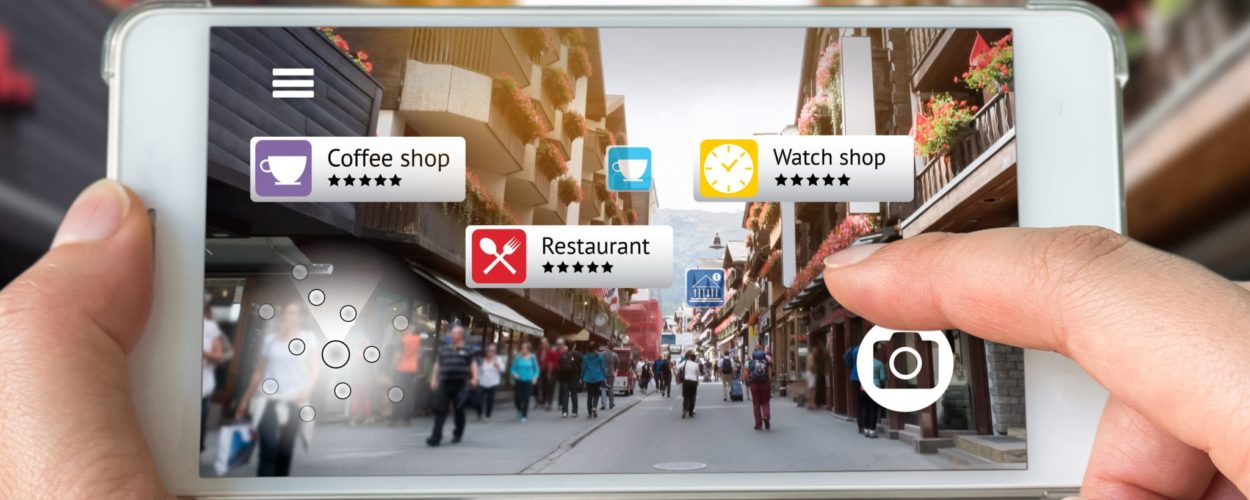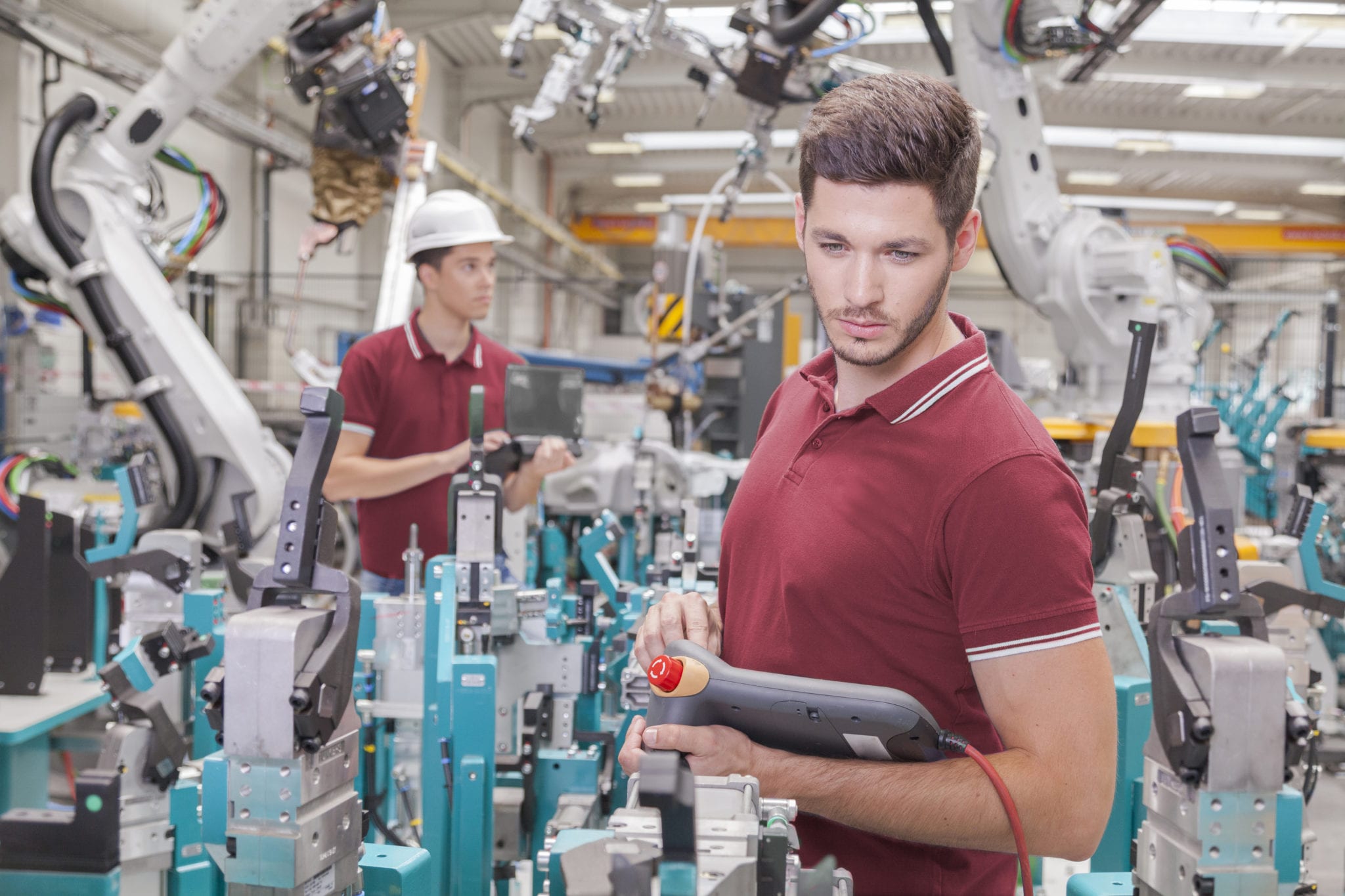
Think augmented reality is reserved for Pokémon Go and trying on sunglasses without leaving your house? Think again. Augmented reality is one of the most exciting innovations of the last few years, especially for businesses and enterprises, due to its virtually unlimited applications.
Luckily for enterprises, they do not need to re-invent the wheel if they want to integrate augmented reality into their workflow. Instead, enterprises can run PoCs with startups in order to find the augmented reality solution that works for their industry and on their ecosystem.
So how can augmented reality make a difference in the operation of enterprises?
Assembly Line Management
When managing a manufacturing or assembly line, floor workers need to take in a great amount of information in real-time and process that information in order to make the best decisions  possible. Oftentimes assessing the external factors takes time and reduces overall production efficiency – a longstanding problem for enterprises looking to improve efficiency and reduce wasted time and money.
possible. Oftentimes assessing the external factors takes time and reduces overall production efficiency – a longstanding problem for enterprises looking to improve efficiency and reduce wasted time and money.
When integrating AR in the workflow, the time it takes for production workers to recognize and process large amounts of information is drastically reduced, improving the overall production line efficiency as well as reducing the chances of errors on the production floor. Augmented reality can also be used to customize and guide workflow steps, further improving management of processes and reducing the risk of errors.
Product Design
When creating a product, the designers often develop interactive models to try and gain an accurate idea of what the product’s final output will be, how it will look, behave and feel. Unfortunately, even the best 2D and 3D renders are not as good as the real thing – something that is often difficult and costly to reproduce during the testing phase. When integrating augmented reality in product design, companies are able to simulate the product’s behavior more accurately and at a fraction of the cost of prototype creation.
Our prooV prediction? This ability to leverage augmented reality technology to get a better understanding of the products can and will be expanded into more and more industries and we will soon see architects exploring apartment designs for functionality before beginning to build (and perhaps realizing a terrible mistake too late)!
Employee Training
 A new employee can only learn so much from videos and textbooks. When integrating augmented reality into the training division, potential employees can suddenly experience situations that would otherwise be difficult to replicate, giving them an experiential learning experience that can potentially prepare them for the job at hand better than any course.
A new employee can only learn so much from videos and textbooks. When integrating augmented reality into the training division, potential employees can suddenly experience situations that would otherwise be difficult to replicate, giving them an experiential learning experience that can potentially prepare them for the job at hand better than any course.
Pilots, first responders, and manufacturing line managers who need to be able to respond quickly in potentially dangerous situations can make use of augmented reality to gain firsthand experience and improve reaction time. General Motors is already using augmented reality technology to train factory workers, and by the end of 2017, Walmart plans on integrating AR for employee training in their 200 Walmart Academies throughout the U.S., helping employees by simulating holiday rush, messy aisles and more.
Healthcare
One of the industries benefiting the most from innovation in the field of augmented reality is the healthcare industry. Beyond training doctors and surgeons in a much more realistic way, augmented reality can assist with in-operating room procedures, optimizing operations and improving patient health. A pilot using Google Glass as an augmented-reality assisted surgical tool helped urology surgeons during penile prosthetic placement surgery by using the camera feed to determine the best placement, resulting in 93% of the surgeons recognizing the benefit and future of AR in the operating room.
Augmented reality in the healthcare industry is already being used to improve the lives of patients and medical professionals alike. The augmented reality app AED4EU was designed to save lives by showing defibrillators nearby, and the startup AccuVein helps nurses find veins easier.
What does this mean for enterprises and startups in the healthcare world? That if they haven’t already started looking to augmented reality to solve the needs of patients and professionals, they need to – and quick!
Retail Sales
We recently wrote about the revolution the retail industry is undergoing (click here to read the article if you haven’t already) and we’re guessing that AR could make that revolution even  bigger! Augmented reality has already been piloted in stores to help consumers try on products without the hassle of entering a changing room, and ModiFace uses augmented reality to help makeup buyers test makeup without having to apply and remove different colors each time.
bigger! Augmented reality has already been piloted in stores to help consumers try on products without the hassle of entering a changing room, and ModiFace uses augmented reality to help makeup buyers test makeup without having to apply and remove different colors each time.
Augmented reality solution, Marxent, is currently being tested in home-improvement stores such as Lowe’s, Ashley’s and more, in order to help home improvement shoppers make better buying decisions by bringing to life renders and visualizations of home improvements and designs.
Augmented reality just might be the solution that will help consumers bridge the online and offline shopping experience and improve overall customer satisfaction when making purchases, big or small.
The prooV Prediction
We love seeing enterprises and startups collaborate (of course!) and we love the new B2B opportunities augmented reality brings with it. Now, all we have left to do is wait and see which enterprises will up their augmented reality investment to come out with the next big thing in their industry.
Free Ebook: Learn How to
Simplify Your Software Testing